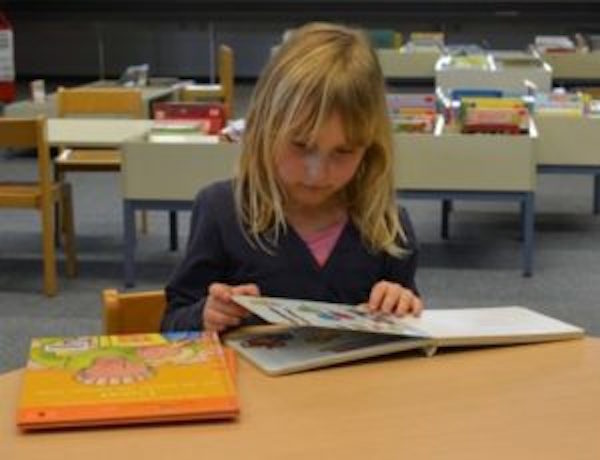
A University of Toronto study found that children ages four to six were more likely to share with others after hearing stories read to them that featured human characters as opposed to the commonly-used anthropomorphic (human-like) animals.
"Many people believe children find stories with human-like animals captivating and relatable, but what we're finding is that this is not the case," says lead researcher Dr. Patricia Ganea, an associate professor of early cognitive development, in a university release.
For the study, researchers measured how altruistic the children were before and after listening to three different storybooks. Children were given 10 stickers that they could share with another child before the books were read to them. They then listened to one of three types of stories.
One group listened to a story about sharing that featured human characters. A second group listened to a storybook that also encouraged sharing, but with human-like animal characters who talked and wore clothing.
A third group heard a different type of story altogether: one about seeds, but without any reference to sharing. This book served as the control in the study.
After they were read the different stories, the children were provided with another round of new stickers that they could share. Researchers determined how generous the children were feeling after the readings by counting the number of stickers they handed out to others and comparing the difference to the number handed out before the stories were read.
The authors found that the children were more likely to hand out stickers to other preschoolers after listening to stories about human storybook characters sharing with others. Children were less likely to bestow stickers on other children after listening to the animal story, even though it was also about the concept of sharing.
"That's because many kids don't see these characters as similar to themselves. They're less likely to translate social lessons from these stories into their everyday lives," explains Ganea.
Researchers quizzed the children on how human-like they saw the animal characters. Though children can act like critters a lot of the time, it is clear that these children are not fooled by talking toads wearing ties. Even at a young age, they already know what they are: humans, not animals.
The children were also less likely to hand out stickers after listening to the seed story that had no reference to sharing.
The authors did discover a sliding-scale relationship within the group that heard the animal story. The more these children perceived the animal storybook characters as human-like, the more generous they became with their peers.
"These findings add to a growing body of research showing that children find it easier to apply knowledge from stories that are realistic," says Ganea. "Overall, children were more likely to act on the moral of the story when it featured a human character."
The study provides important clues about how children learn from storybooks and why the adults in their lives need to put more thought into the books they pick out to read to little ones, the authors say. These stories and their messages can shape social behavior in a big way.
"Parents can play an important role in children's learning by asking them to explain parts of the story and helping them see the similarity between the story and their own lives," adds Nicole Larsen, who also worked on the study.
"Books that children can easily relate to increase their ability to apply the story's lesson to their daily lives," Ganea concludes. "It is important for educators and parents to choose carefully when the goal is to teach real-world knowledge and social behaviors through storybooks."
The full study was published in Developmental Science.



So much research into this..... Psyops!